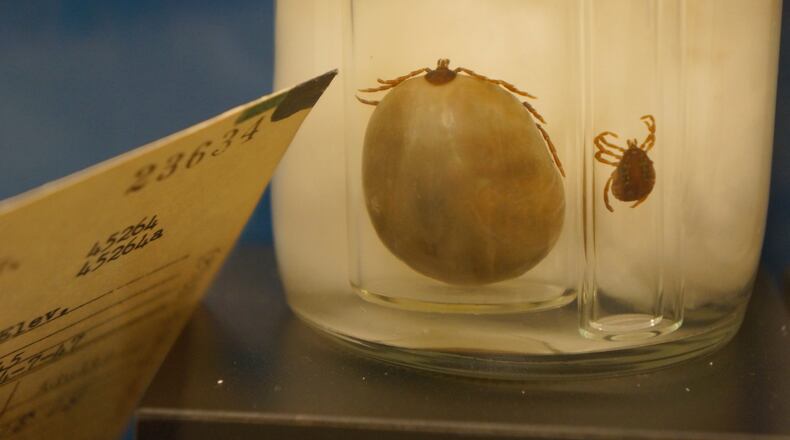Sandflies are pesky little biters and mosquitoes can make the outdoors absolutely miserable, but no blood-sucking parasite in the South is as troublesome or tenacious as a tick.
The little mites latch onto your warmest, hard-to-reach places and sip on you for days before you realize they’re even there, by which time you have to pull the stubborn bloodsuckers out with tweezers (don’t leave the head). Then there's the possibility of contracting Lyme disease or, God forbid, an allergy to red meat (from a Lone Star tick).
Most people would rather avoid ticks altogether, but for those who would like to learn more about them, Georgia Southern University's Statesboro campus houses the largest collection of ticks in the world. The U.S. National Tick Collection belongs to the Smithsonian's National Museum of Natural History, but has been kept at GSU since 1990.
Credit: Christopher Berinato for the Savannah Morning News
Credit: Christopher Berinato for the Savannah Morning News
The tick collection originally began in Montana over a century ago because of a Rocky Mountain spotted fever scare that inspired scientists to begin studying them. The collection is so old, it even contains ticks collected by President Theodore Roosevelt while on a safari.
The collection contains over 1 million specimens from nearly 860 known species from every continent. Ticks can be found in almost every environment, even in Antarctica where Ixodes uriae feeds off of colonies of penguins.
Credit: Christopher Berinato for the Savannah Morning News
Credit: Christopher Berinato for the Savannah Morning News
The GSU collection actually serves an important role for researchers and public health officials from all over the world studying the many diseases spread by parasites. It’s not just humans that need to worry about ticks. According to a 1996 issue of American Entomologist, 80% of the world’s cattle is plagued by ticks, and significant economic losses in the hundreds of millions of dollars is attributed to host blood loss, hide and udder damage, inoculation of toxins, and transmission of pathogens.
The whole notion of so many ticks in one place may sound like a nightmare, but all of the ticks are freeze dried, bottled and coated so that they are easier to observe under a microscope, so you don’t have to worry about walking out of there with one hiding in your navel.
The U.S. National Tick Collection is located in the Math/Physics building as 1332 Southern Drive at the GSU Statesboro campus. Visits to the USNTC are by appointment only, but a permanent exhibit just outside of the collection is free to look at during normal building hours. The exhibit’s various detailed displays featuring hugely engorged specimens will teach you more than you ever thought you wanted to know about ticks.
Visit cosm.georgiasouthern.edu/usntc/ for more information.
This article originally appeared on Savannah Morning News: That's so Savannah: Where to see the world’s largest collection of ticks
The Latest
Featured




